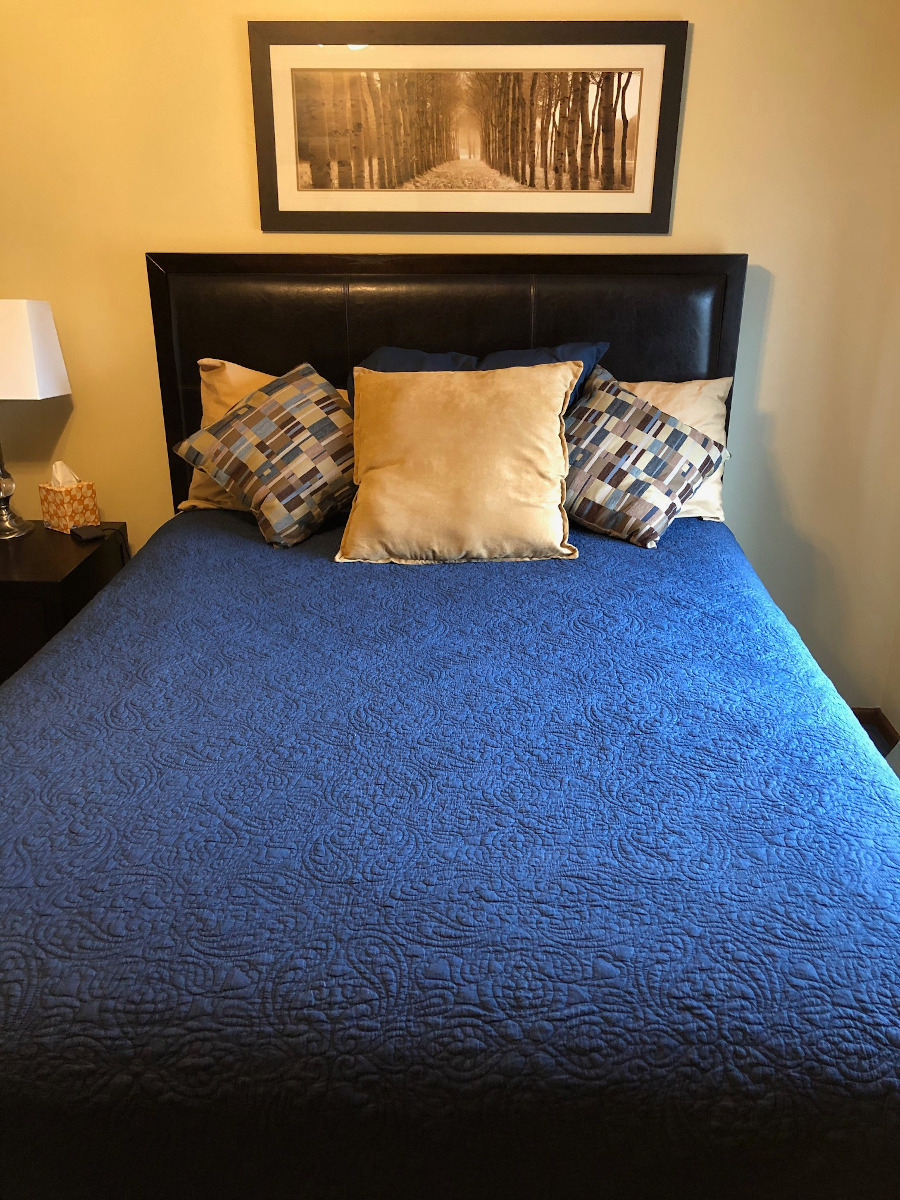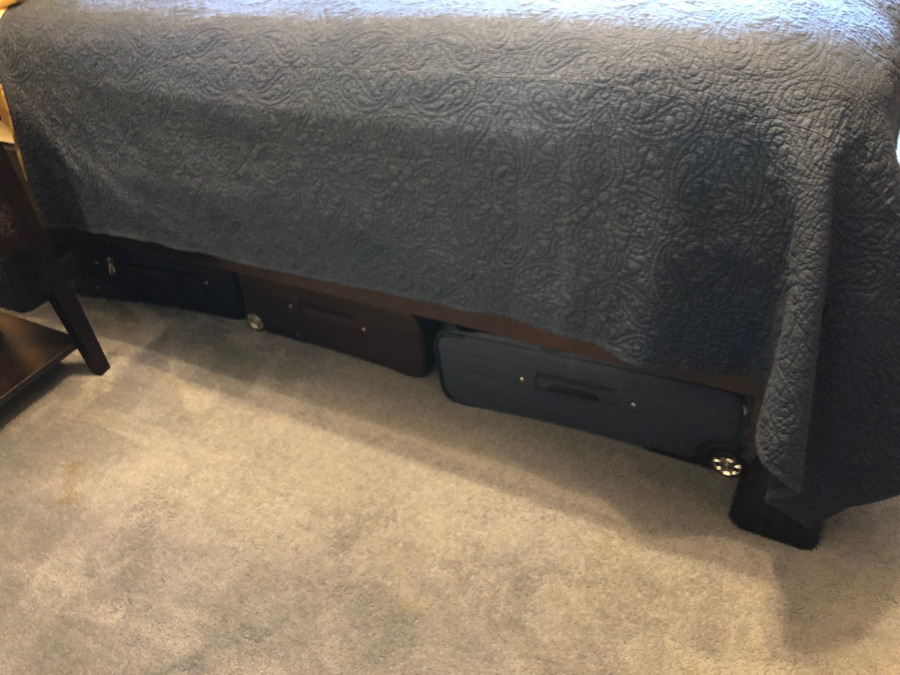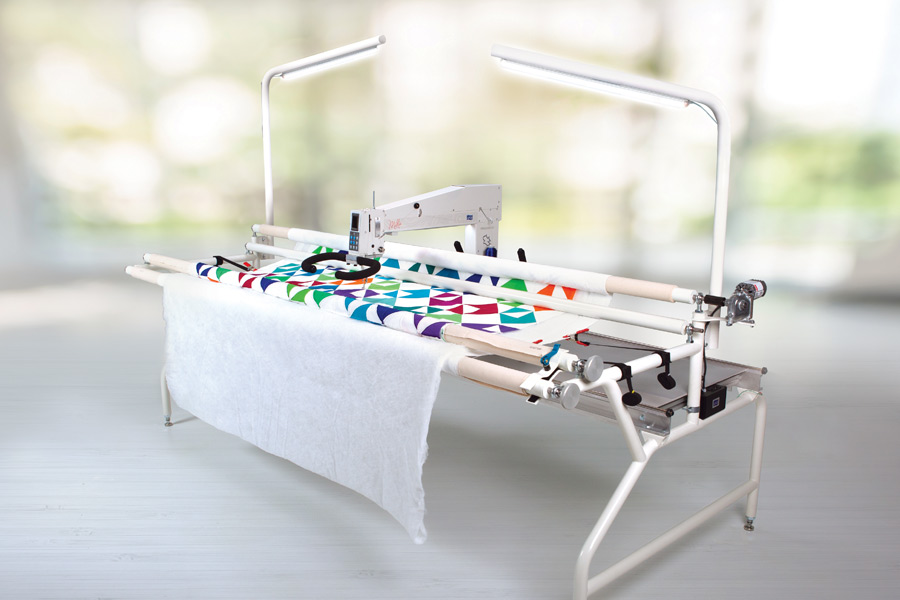Reference chart for quilt sizes

When my hubby and I were first married, our jobs were in different cities. I stayed in a small attic apartment during the week with nothing more than a twin bed, one overstuffed chair, and a card table for furniture. On rare occasions when I needed to work over a weekend, he’d drive up and stay with me.
Somehow, we both managed to sleep on that twin bed (we were both skinnier back then!) but we were constantly battling for control over the narrow twin blanket. That’s the first time I learned about “drop” and how important it could be to comfortable sleep (and to a happy marriage.) 😊
Now 35 years later (and more than 35 pounds later for each of us), some days a king-size bed doesn’t even feel big enough! The battle for cover control still rages on, but the extra “drop” on our king-size quilt helps make sure we’re both still warm even when one rolls over while clinging to the covers.
“Drop” is the distance that a quilt falls off the top edge of the bed. A “pillow tuck” (sometimes called a “pillow roll”) adds extra inches to the length of a quilt so that the top edge can be tucked around the bed pillows much like a full bedspread.
Take a look at the guest bed. During a recent closet re-org, I decided that all our suitcases could hide under this bed and free up some much-needed closet space. I put bed risers under the frame, and the suitcases slide under perfectly, but it’s obvious to our guests that they’re under there. I could add a bed skirt to camouflage them, but a quilt with a bigger drop would make it much easier to get at them when we need them.


When quilters shop for an APQS longarm, I’m often asked what size quilt can be completed on each frame length. That’s a bit trickier to answer these days! Though mattress lengths and widths have remained standard for many years, frame styles and mattress depth have changed tremendously. Pillowtop mattresses, foam overlays, risers and adjustable bed frames can have a big impact on a finished quilt’s size. It may be better to think in “inches” now instead of “standard quilt size.” Given those variables, a standard “queen-size” quilt may not fit your queen-size bed!
Given all the variables with today’s beds and styles, we thought it would be helpful to create a handy reference chart to give you a starting point when designing your next quilt size. It includes measurements for different drop lengths on three sides of your quilt, and a separate measurement if you like to tuck your quilt up around your bed pillows. However, the chart can’t account for cover-stealers or suitcases under the bed. 😊 You’ll need to do some extra measuring for those!
When using a longarm, plan on the backing fabric being anywhere from 3 to 6 inches larger than the quilt top on all sides. This gives you room to test your tension, attach the clamps that keep the backing smooth, and space to quilt completely off the quilt top with your design. You can get by with less in a pinch but having that extra breathing room makes life so much easier. We’ve included a chart for quilting frame sizes too.

The length of the quilt top is far less critical when choosing a longarm frame because the frame can hold several yards of fabric wrapped around the rollers. The quilt’s length becomes more important if you decide to mount the quilt to the rollers using its long sides instead, and its length exceeds your frame’s width. It’s possible to load a quilt that’s too big for the frame, but that’s a subject for another blog post!
Keep this reference chart handy and all your bed sizes will be “covered”! 😊



